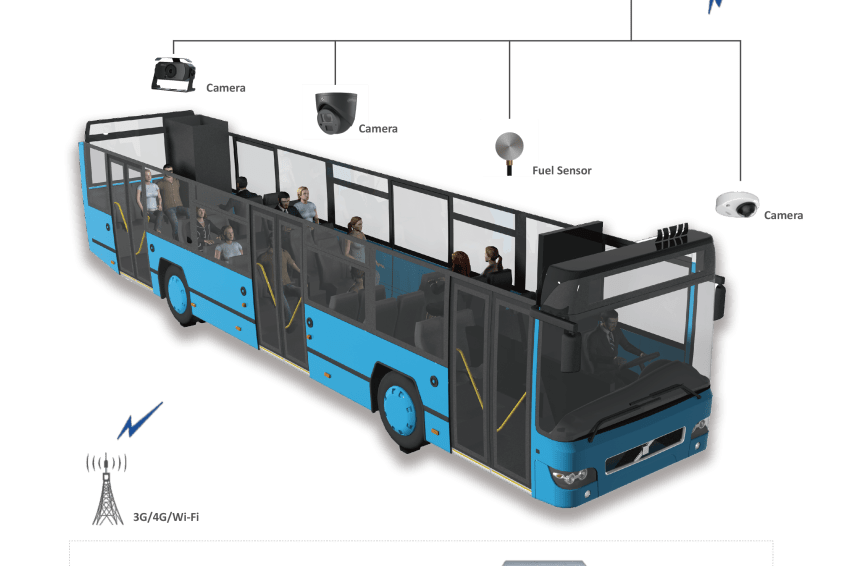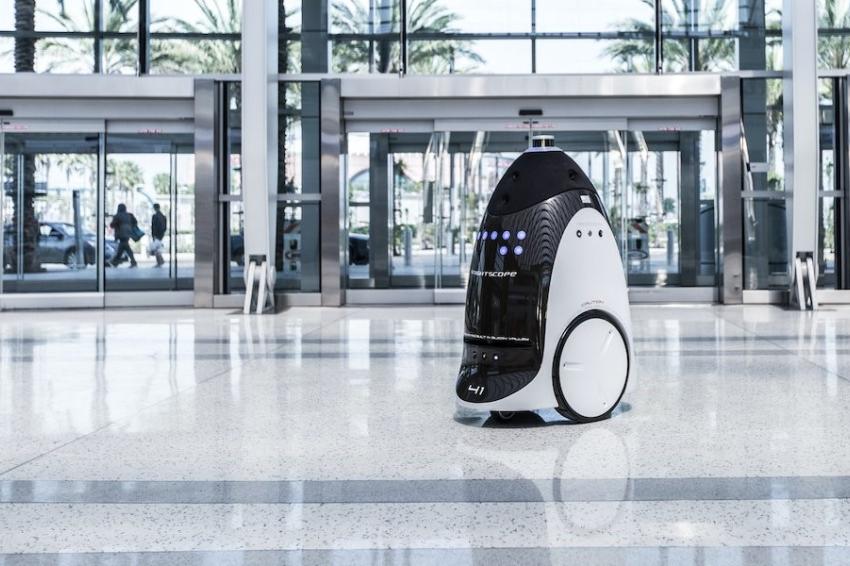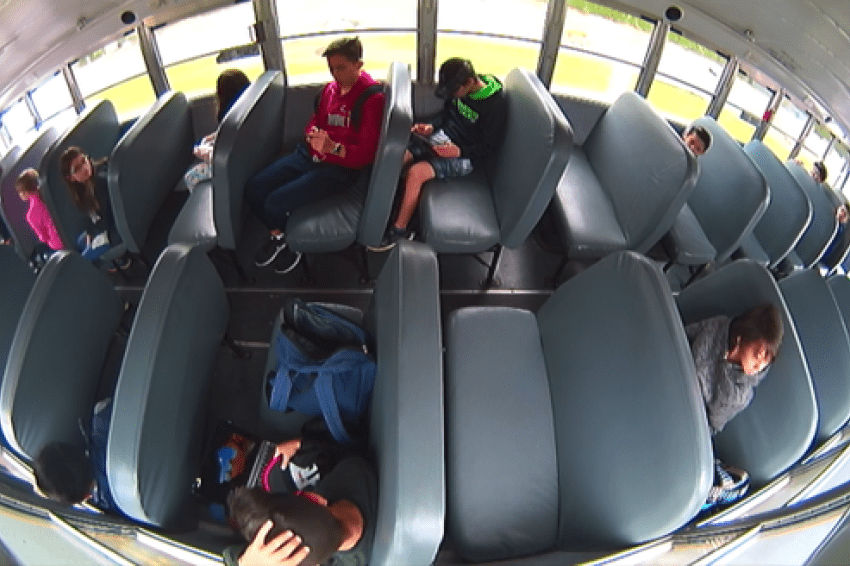Special: Public Transport Security 2022
11.03.2022 - Two years ago, in the March 2020 issue of GIT SECURITY we took a look at some of the products and solutions on the market being supplied to secure public transport. It is time for an update to see what the latest technology now offers.
Some things just don’t change: we wrote then about terrorists planning an attack, “If an AI system is fed with good information, it can analyze and predict much better than any team of people, no matter how large. And that is crucial to success in preventing such attacks – the gathering and input of good information. So the quality of video surveillance, movement analysis and system instructions is still going to decide how effective such an effort will be.”
This is just as true today as two years ago, but in the meantime we generally just call all this input ‘big data’. The level of artificial intelligence being built into components and systems has significantly increased, with the magic letters “AI” appearing in many product descriptions. So there is an increasing amount of assimilation and linking of data going on in the background and all around us. This really has led to a welcome ability of the security forces to predict and be prepared for illegal/terrorist activity, with many planned attacks thankfully being foiled before they could be carried out.
Machine learning and big data analysis work through the huge amounts of data generated by biometrics, facial recognition, smart cameras, and other video surveillance systems. This can identify otherwise invisible patterns, correlations and trends that humans cannot see so that the appropriate measures can be taken by the responsible authorities to intervene before devious deeds can be done – predictive policing.
Ethical Dilemma
Although controversial in western countries (and even some cities in the US have banned it), predictive policing is being deployed widely in Asia. A survey by Deloitte entitled “Surveillance and Predictive Policing Through AI” has highlighted considerable differences in the tolerance of these technologies between regions. Both surveillance and predictive policing are considered intrusive in more privacy-aware regions such as the EU and North America. In Latin America and Asia, however, they are more acceptable.
There is evidently still some work to be done in gaining the trust of the general public that their privacy rights will be fully respected before the widespread introduction of AI-based security on public transport and in public spaces. In any event, this must be accompanied by strict procedures for the human follow-up of AI findings to avoid innocent people being the victim of over-eager algorithms, with the assimilated data kept as generic and environmental as possible, and not personal.
Video Surveillance in Vehicles
While airline pilots enjoy a securely locked ‘driving compartment’ and the name of everyone on board has already been established long before they sit down, the same cannot be said for bus drivers. They are in close proximity to passengers and unfortunately the butt of some people’s frustration when things don’t run to plan. A physical barrier can protect drivers to a large extent, while avoiding interaction by using contactless ticketing is a pro-active measure to minimize personal contact and to speed up boarding. Providing a microphone and panic buttons (concealed for drivers) will help to ensure their safety. Cameras installed throughout the vehicle – whether in a bus, a train or a tram carriage – can easily provide real-time images of any unusual situation for a central operations control room. From their wide-ranging product palette, Seon has already implemented video security and analytics in numerous public transport vehicles, in particular those ferrying schoolchildren every day. Streamax also have the products tailored to provide informative public transport video solutions.
With 5G mobile networks coming on stream in many towns and cities, transmitting high-quality video from a train/tram carriage or a bus has become relatively easy in urban environments, although solutions for rural transport still seem to be few and far between. This may change imminently as the LEO satellite networks attain complete geographic coverage. The transfer of IP video and other operational and performance data of vehicles or rolling stock back to HQ for analysis is provided by a plethora of companies these days. Add in signage, GPS location, passenger information apps and wi-fi to the mix, and public transport is truly buzzing with continuous data communication.
With an increasingly impressive international reference customer list, Teleste provides custom information and security solutions for road and rail public transport, while GMV offer comprehensive public transport solutions incorporating security, ticketing, tracking and information provision. Dahua Technology has established a strong reputation for itself as a video surveillance solutions provider, facing the challenge from an increasing number of terrorist attacks targeted at public transportation systems to bus accidents that happen because of driver fatigue, using a mobile phone while driving, speeding and other dangerous driving behavior.
Mind the Gap
The European Passengers’ Federation (EPF) has highlighted a gap in the concept of video surveillance, namely that when an incident occurs and CCTV is being used to follow the perpetrator, there is no continuity between systems. Although a troublesome or criminal passenger can be clearly seen in, on and around public transport via a vehicle’s cameras and those on platforms and station entrances, they can disappear into the crowd once out on the street. It is already possible to quickly share recorded video sequences with the police or other authority – Axis Communications is one company whose transport solutions provide such a facility – but the call is clearly for the intelligent ‘handover’ of tracking between different surveillance systems, something that AI should be able to realize.
Who is Driving?
An analysis of traffic accidents involving public transport vehicles has revealed that in many cases it was driver error, rather than a technical defect, that caused the crash. Overtired, inattentive or inebriated drivers can be detected by their driving behavior – sensors reporting via the CAN bus on speed, acceleration, braking and steering can provide the necessary data for AI systems to raise an alarm if necessary. Video analysis can detect closed eyes or other signs of sleepiness. The Russian Skytracking Transport Security Platform combines these into one platform that ultimately reduces accidents and injury. In cooperation with Cisco, the young Irish company Davra has implemented a multifunctional information system for the San Diego transport authority in California. It provides rich data with edge analytics and a two-way communication system that informs of related initiatives such as predictive maintenance, the security and safety environments, and a near-real-time display of alerts and notifications.
Sharing the Knowledge
As part of its ongoing commitment to making public transport safer, the International Association of Public Transport (UITP) is joining forces with the EU Safe Bus project, along with four other consortium partners. Safe Bus will bring to the table special security services in the public transport sector, ensuring that all transport providers have access to knowledge about transport safety and emergency procedures. The project will also introduce new training initiatives on the security of public bus transportation systems for both managers and bus drivers, enrich safety procedures and implement ready-to-use recommended solutions. The Transport Innovation Summit will provide an online platform to discuss the evolution in public transport from 6–8 April 2022.
All these aspects and others will also be the topics of discussion at IT-Trans 2022, taking place in Karlsruhe from 10–12 May. The exhibition is focused on IT solutions for public transport and will bring together around 270 exhibitors from 35 countries. The conference program running in parallel will present some 180 speakers over three days covering, amongst others, topics from artificial intelligence, big data, autonomous mobility, mobile ticketing, on-demand mobility, cyber security and data governance.
The Personal Touch
Although automatic systems – whether AI-supported or not – can take a great load off centralized operational staff, the action at the scene of a disturbance of any kind is taken by intervening boots on the ground. Those people – probably wearing high-visibility jackets – in fact do not just solve a problem but also passively contribute to customer satisfaction while using public transport. A number of studies have shown that the number one anxiety people have before using public transport is a lack of security personnel. These do not have to be police officers, but can also be appropriately trained security staff provided by private enterprises. Ciborius has specialized in providing security at bus and train stations, airports and ship terminals by training its staff in first aid – also with a defibrillator – bringing them to the fire protection and evacuation assistance certificate, the security specialist examination according to §34a of German trade law, unarmed self-defense and also de-escalation. They are also instructed in the use of self-defense equipment for specific purposes, including pepper spray, handcuffs and a telescopic baton.
For a much more passive but nevertheless reassuring presence, you could consider introducing the friendly little robots built by Knightscope. The K3, K5 and K7 models will wander around, always on the lookout for unusual situations, and provide deterrence, increased awareness with a conspicuous physical presence, and high-quality evidence to prosecute criminals. They’re also quite cute!
Suppliers
Axis Communications - www.axis.com
Ciborius - www.ciborius-gruppe.de
Dahua Technology - www.dahuasecurity.com
Davra - www.davra.com
Deloitte - www.deloitte.com
European Passengers’ Federation - www.epf.eu
GMV - www.gmv.com
International Association of Public - www.uitp.org
Transport (UITP)
IT-Trans - www.it-trans.org
Knightscope - www.knightscope.com
Seon - www.seon.com
Skytracking - www.skytracking.ru
Streamax - streamax.com
Teleste - www.teleste.com
Transport Innovation Online Summit - www.intelligenttransportconference.com












